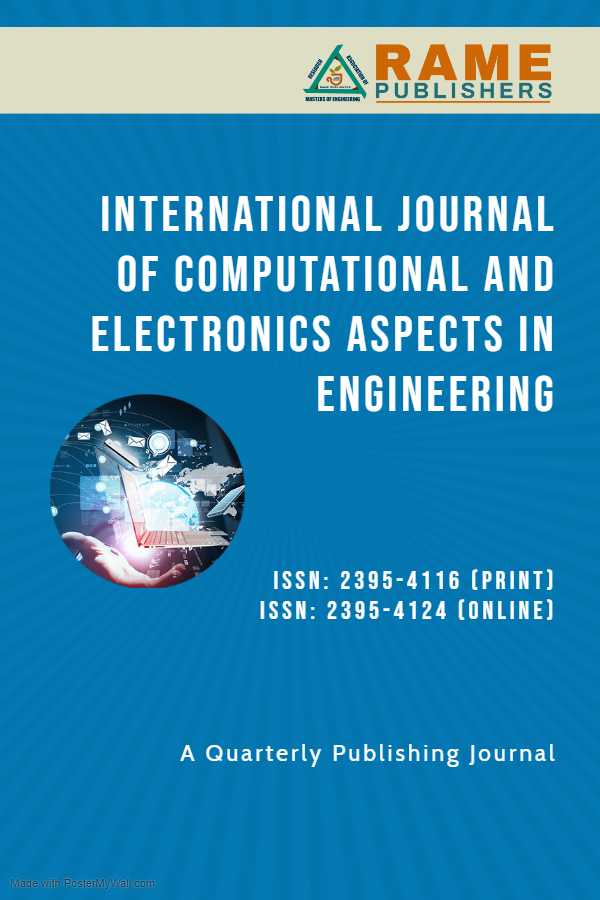Innovative Solutions for Reducing Signal Loss in Long-Distance FTTH Networks
Mohammed Fareed Mahdi
International Journal of Computational and Electronic Aspects in Engineering
Volume 6: Issue 2, May 2025, pp 51-69
Author's Information
Mohammed Fareed Mahdi1
Corresponding Author
1Department of Computer Science, University of Thi-Qar, Iraq
mfmsprof@utq.edu.iq
Abstract:-
Fiber-to-Home (FTTH) networks face important challenges with signal pilots, especially over long distances. The purpose of this research is to develop an innovative solution to increase the performance of the FTTH network and reduce signal loss using advanced optical engineering techniques and network design strategies. The research method involves studying the most important factors affecting the signal LOS, including CAR, spreading and no -lines -intervention, followed by optical transmission enhancement technology as optical signal amplifiers (EDFA, Raman Vamlephire), different techniques for the use of spreading, spreading, compensation. The first results indicate that the signal LOS can be significantly reduced to the Raman amplification with advanced modulation forms such as OFDM and continuous signal regeneration [1] with the transmission area. In addition, findings suggest that the use of automated error improvement techniques on high networks can increase the signal stability over long distances. The study conclusion that improvement of network optimization under circumstances for improving the FTTH network requires integration of extended optical hardware, advanced software and artificial intelligence techniques. This research contributes to the development of fiber optic networks to meet high speed and meet the increasing demand for reliable communication.Index Terms:-
FTTH networks, signal loss, fiber optics, cushioning, optical signal amplifiers, Raman reinforcement, spread of compensation technology, artificial intelligence in communication.REFERENCES
- G. P. Agrawal, *Fiber-Optic Communication Systems*, 4th ed. Hoboken, NJ, USA: Wiley, 2010.
- J. Hecht, *Understanding Fiber Optics*, 5th ed. Upper Saddle River, NJ, USA: Prentice Hall, 2015.
- J. M. Senior and M. Y. Jamro, *Optical Fiber Communications: Principles and Practice*, 3rd ed. Harlow, U.K.: Pearson, 2009.
- M. N. Islam, "Raman Amplifiers for Telecommunications," *IEEE J. Sel. Top. Quantum Electron.*, vol. 8, no. 3, pp. 548–559, May 2002.
- A. Al-Fuqaha, M. Guizani, M. Mohammadi, M. Aledhari, and M. Ayyash, "Internet of Things: A Survey on Enabling Technologies, Protocols, and Applications," *IEEE Commun. Surv. Tutor.*, vol. 17, no. 4, pp. 2347–2376, 2015.
- S. J. Savory, "Digital Coherent Optical Receivers: Algorithms and Subsystems," *IEEE J. Sel. Top. Quantum Electron.*, vol. 16, no. 5, pp. 1164–1179, Sept.–Oct. 2010.
- R. Hui and M. O’Sullivan, *Fiber Optic Measurement Techniques*. San Diego, CA, USA: Academic Press, 2009.
- W. Shieh and I. Djordjevic, *OFDM for Optical Communications*. San Diego, CA, USA: Academic Press, 2010.
- X. Liu *et al.*, "Machine Learning for Optical Communication Systems," *IEEE Commun. Mag.*, vol. 58, no. 2, pp. 32–39, Feb. 2020.
- S. Zhang, "AI-Driven Signal Processing in Fiber Networks," *J. Lightw. Technol.*, vol. 39, no. 4, pp. 1023–1035, Feb. 2021.
- R. Chavan and J. Muley, "Trust Model for Cloud Data Service Providers," International Journal of Computational and Electronic Aspects in Engineering, RAME Publishers, vol. 4, no. 3, pp. 86–89, 2023.
- A. V. Karthick and S. Balasubramanian, "Information Technology for Smart Business," International Journal of Computational and Electronic Aspects in Engineering, RAME Publishers, vol. 4, no. 3, pp. 78–85, 2023.
- A. A. Salih, "Improved Security and Handover Technique in (4G) LTE," International Journal of Computational and Electronic Aspects in Engineering, RAME Publishers, vol. 3, no. 4, pp. 76–83, 2022.
- A. Gokhale, L. Gada, K. Narula, and A. Jogalekar, "Software Defined Networking Towards 5G Network, "International Journal of Computational and Electronic Aspects in Engineering, RAME Publishers, vol. 4, no. 3, pp. 68–77, 2023.
- J. Al-Sammak and H. Talib, "Propose an Object Detection Optimization Algorithm by Using Particle Swarm Optimization (PSO) Based-on Exploration Ability of Grey Wolf Optimizer (GWO)," International Journal of Computational & Electronic Aspects in Engineering (IJCEAE), vol. 5, no.
- A. A. Hadi, "The Impact of Artificial Neural Network (ANN) on the Solar Energy Cells: A Review," International Journal of Computational & Electronic Aspects in Engineering (IJCEAE), vol. 5, no. 1, 2024.
- I. A. Ameen and M. A. Al-Sheikh, "Wireless Sensor Networks for Smart Gardening: ESP-NOW and Blynk IoT Integration for Water and Energy Optimization," International Journal of Computational and Electronic Aspects in Engineering, RAME Publishers, vol. 5, no. 3, pp. 101–115, 2024.
To view full paper, Download here
To View Full Paper
For authors
Author's guidelines Publication Ethics Publication Policies Artical Processing Charges Call for paper Frequently Asked Questions(FAQS) View All Volumes and IssuesPublishing with




